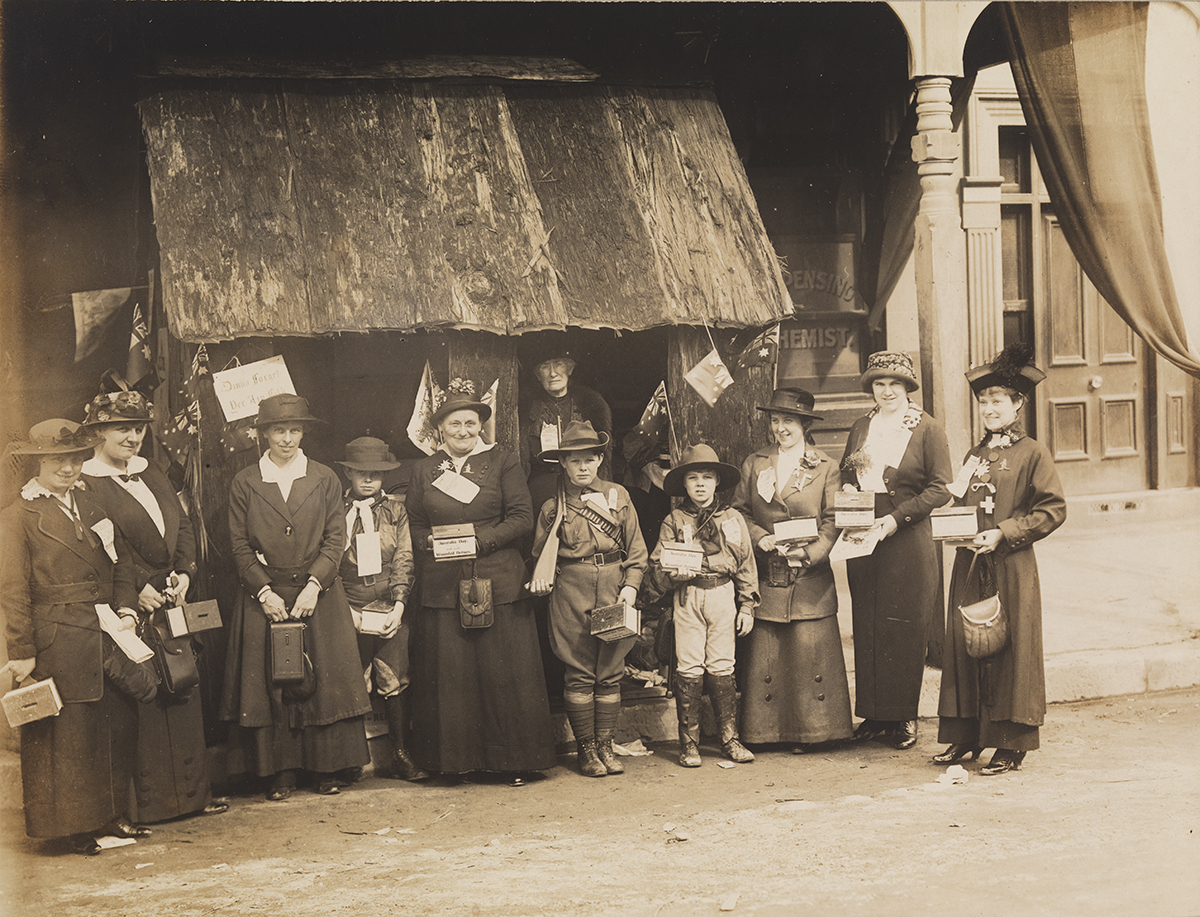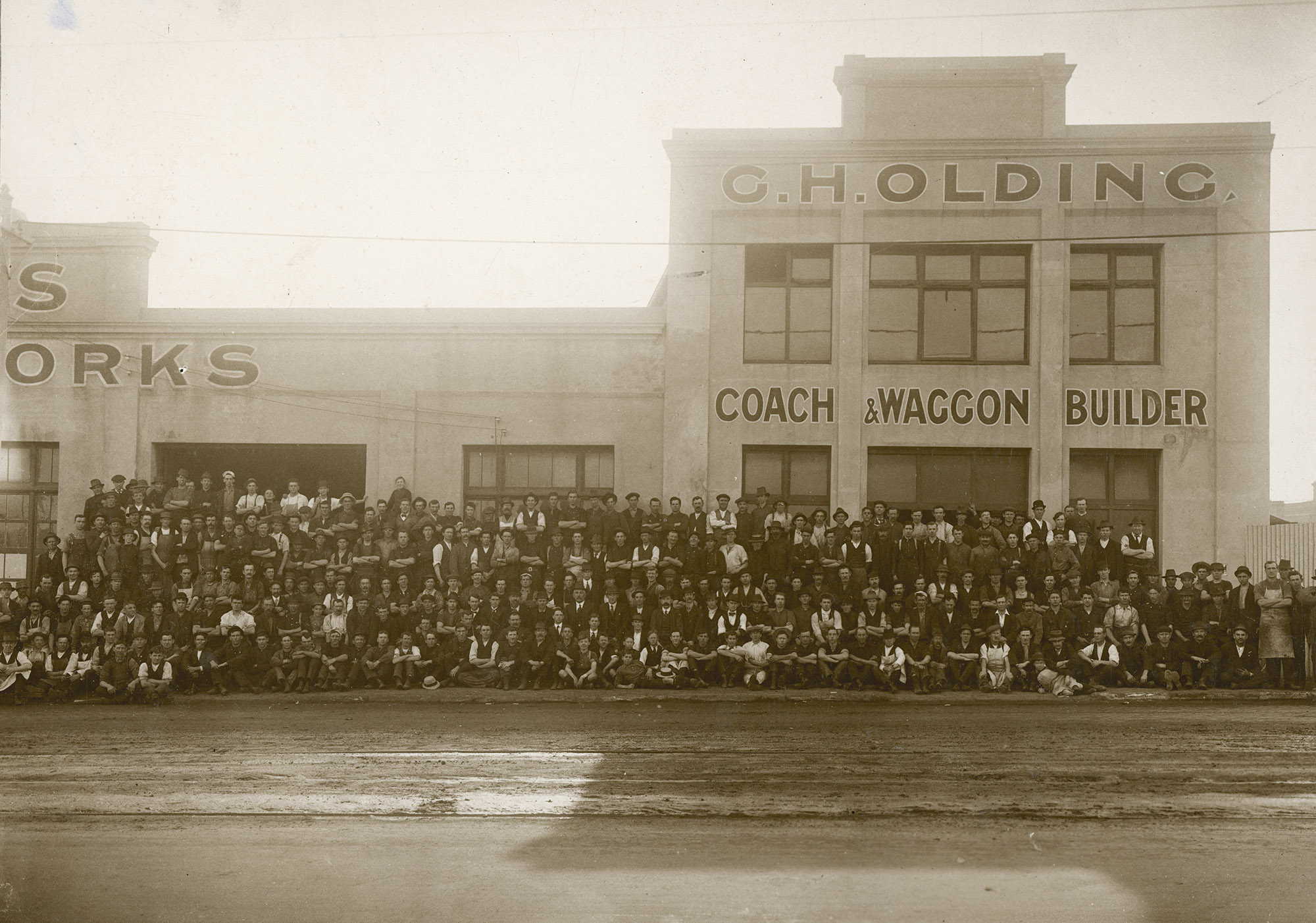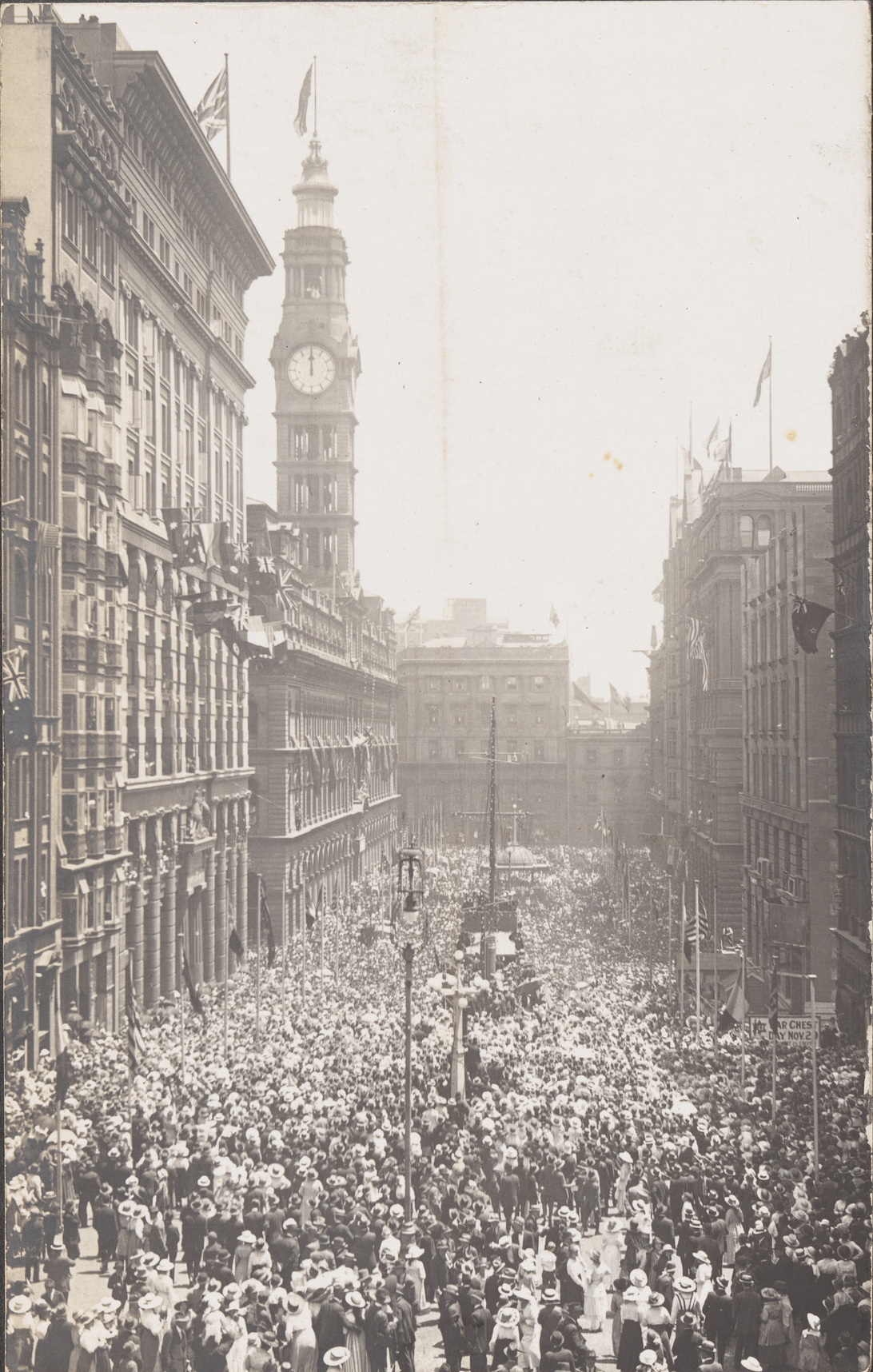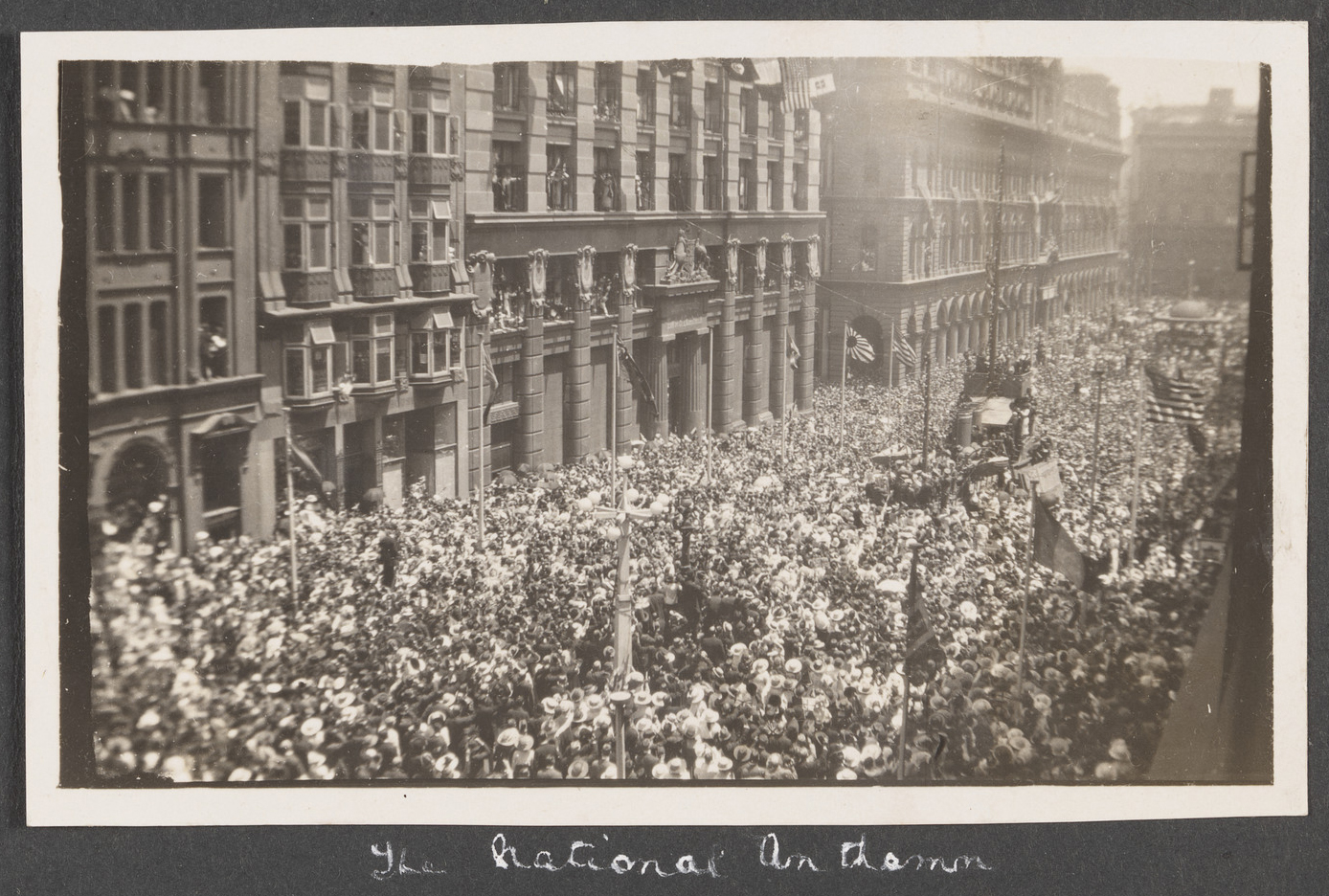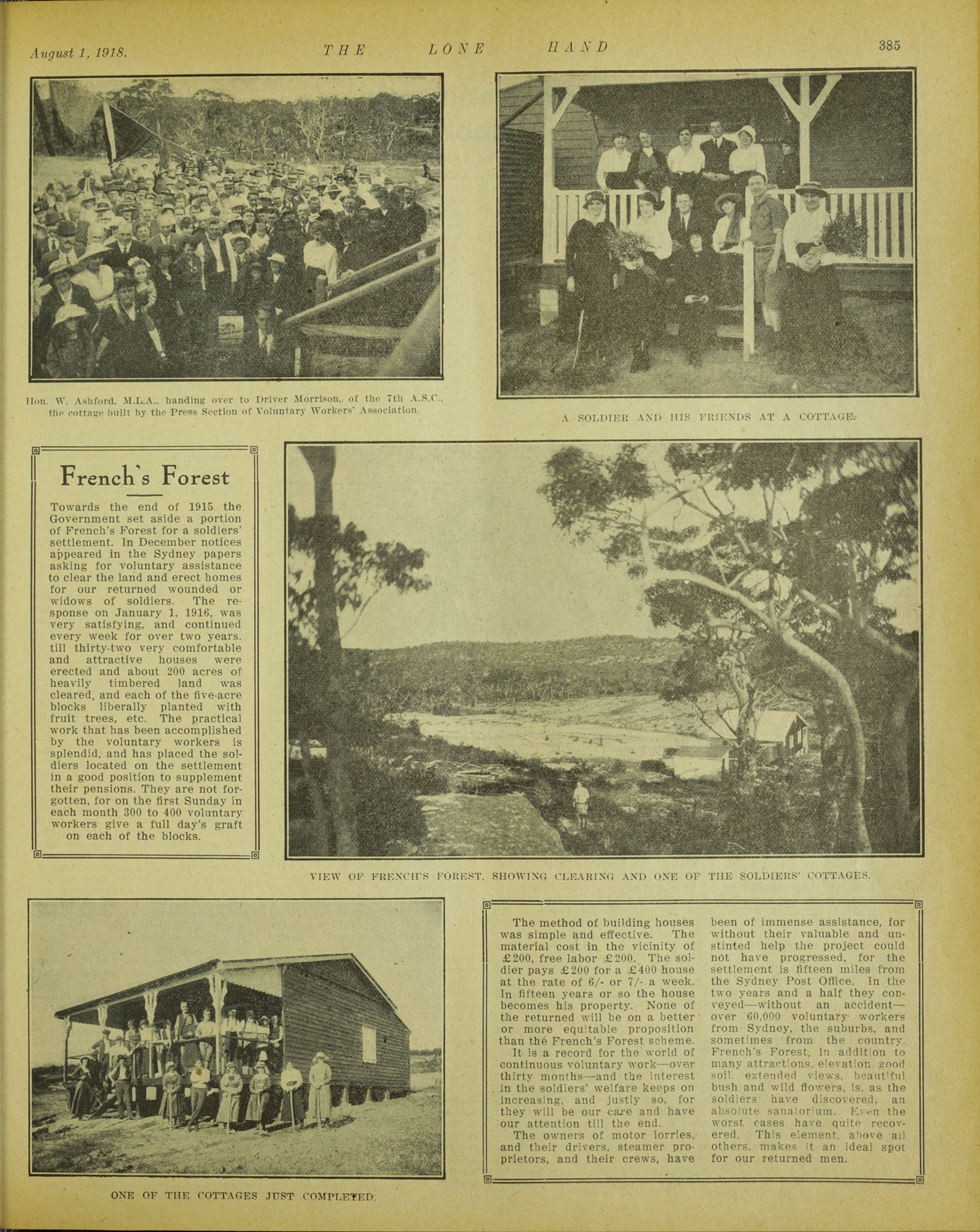The Dictionary of Sydney was archived in 2021.
International war between the Allies (Britain and its dominions, France, Russia, Italy and the USA) and Central Powers (Germany and Austria–Hungary,Turkey and Bulgaria) that was fought mainly in Europe and the Middle East. It began on 28 July 1914 and ended on 11 November 1918. Australia's involvement in the war began on 4 August 1914 when Britain and Germany went to war and Australia, as one of Britain's dominions, pledged full support. Australians fought in the British and Australian armies.
While no battles took place on Australian soil, Australian involvement in the conflict had both immediate and long term impacts on the local community.
Milestone
Date of event
28 Jul 1914 - 11 Nov 1918
{"name":"Date of event","target":"","target_text":null,"date":{"#markup":"<span class='date'>28 Jul 1914<\/span><span class='separator'> - <\/span><span class='date'>11 Nov 1918<\/span>"},"date_start":"1914-07-28","date_end":"1918-11-11"}
Name
Alternate
Great War
{"name":"Alternate","target":"","target_text":"Great War","date":{"#markup":"<span class='date'><\/span>"},"date_start":null,"date_end":null}
Alternate
War to End All Wars
{"name":"Alternate","target":"","target_text":"War to End All Wars","date":{"#markup":"<span class='date'><\/span>"},"date_start":null,"date_end":null}
Alternate
First World War
{"name":"Alternate","target":"","target_text":"First World War","date":{"#markup":"<span class='date'><\/span>"},"date_start":null,"date_end":null}
Alternate
WWI
{"name":"Alternate","target":"","target_text":"WWI","date":{"#markup":"<span class='date'><\/span>"},"date_start":null,"date_end":null}
Alternate
WW1
{"name":"Alternate","target":"","target_text":"WW1","date":{"#markup":"<span class='date'><\/span>"},"date_start":null,"date_end":null}
Type
{"name":"War or military engagement","target":"","target_text":null,"date":{"#markup":"<span class='date'><\/span>"},"date_start":null,"date_end":null}




